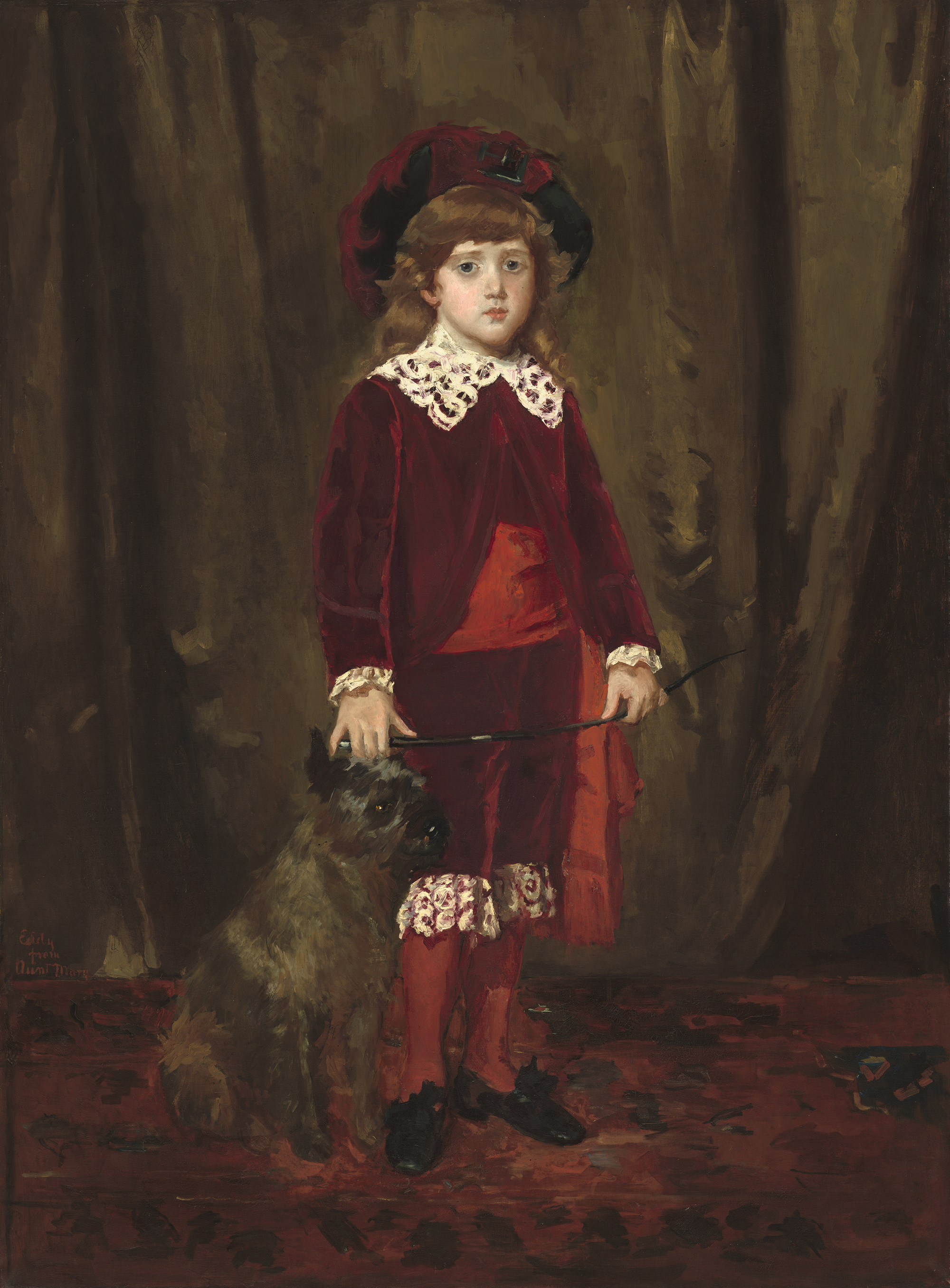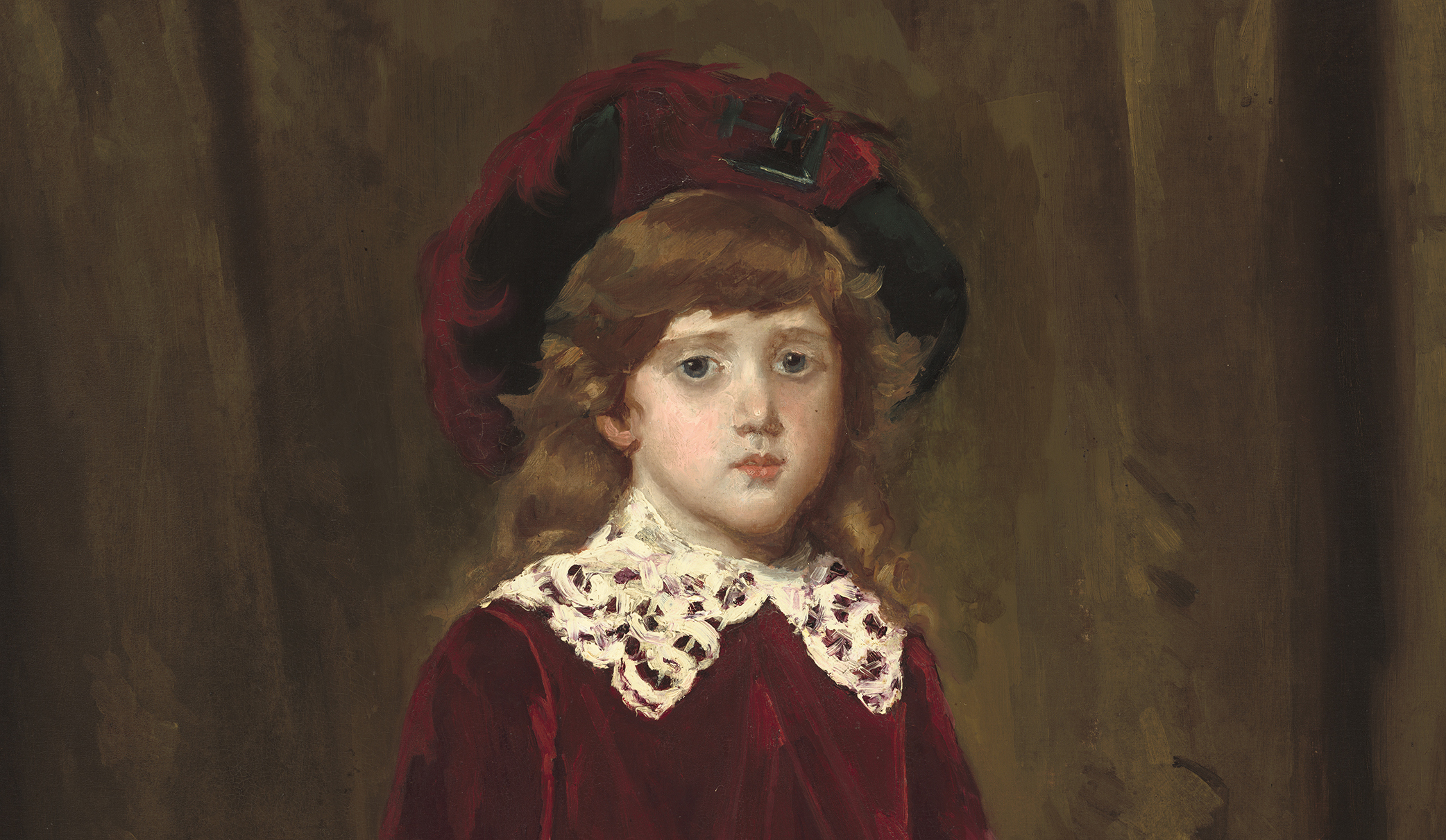
WASHINGTON – A rare early portrait by Mary Cassatt (1844–1926), a self-portrait by Jan Miense Molenaer (1610–1668), a groundbreaking work by Arshile Gorky (1904–1948), and a remarkable photograph of Alice and Lorina Liddell by Charles Lutwidge Dodgson (1832–1898), better known as Lewis Carroll, are among the works recently acquired by the National Gallery of Art, Washington.
Three rare illustrated books and a portfolio, all highlighting aspects of the New World, were donated by Harry W. Havemeyer in memory of his father, Horace Havemeyer. Havemeyer also pledged an extraordinary collection of 117 early American views and historical prints assembled by him and his father, in whose memory the pledge was made.
Paintings
Eddy Cassatt (1875), a portrait of Edward Buchanan Cassatt, the eldest son of Mary Cassatt’s brother Alexander, offers a striking complement to Cassatt’s later painting Little Girl in a Blue Armchair (1878), also in the Gallery’s collection. This painting, which has remained in the family of Col. Edward Buchanan Cassatt since its creation, is a gift from his granddaughter – the artist’s great-grandniece – Julie Thayer Vehr.
Self-Portrait as a Lute Player, circa 1635, depicts Jan Miense Molenaer wearing a wide-brimmed hat and quietly tuning his lute, an activity that symbolically suggests the sitter’s commitment to conduct his life in a balanced and harmonious manner. On the table next to him is a still life depicting an array of foods, vessels, smoking implements, and a pochette, a small violin.
The gallery also acquired Georg Emil Libert’s (1820–1908) View of Sommerspiret, the Cliffs of Møn (1846). This pristine landscape depicts the dramatic topography, bright blue Danish sky, and small figures beholding the marvelous scene that is characteristic of this moment in the history of landscape painting.
Drawings, Prints and Illustrated Books
Previously owned by his widow and children, Untitled (Cubist Figure), circa 1930, shows Arshile Gorky wrestling with the abstract works of Picasso’s analytic cubism. While the work, which is essentially a painting on paper, is largely abstract, a female nude is nonetheless recognizable from her triangular and circular breasts and rounded hips. Gorky also affixed collage elements—texts he tore from an art journal—to the work, evoking Picasso’s and Braque’s use of newspaper fragments in their classic cubist collages.
Photographs
Among the many photography acquisitions is a photograph by Lewis Carroll, Alice and Lorina Liddell in Chinese Dress (1860). This iconic photograph of Alice, the little girl who inspired Carroll’s masterwork of children’s literature, Alice’s Adventures in Wonderland, shows her with her older sister. The girls are posed wearing arresting costumes, evoking the theatricality of Victorian photography.
Sculptures
Beaux Chair, 1975, by Ree Morton (American 1936–1977), belongs to a series of works by the artist in a variety of materials featuring a bow form. Using the homophone “beaux” in the title – an adjective meaning “beautiful” in French and a noun meaning “boyfriend” in English—the artist introduces an ambiguity to the feminized form. This work is the first by the artist to enter the gallery’s collection.
Betye Saar (b. 1926) created Twilight Awakening on a recycled printer’s block and incorporated jewel-like elements made of plastic, ceramic, and glass. The work depicts Aquarius, the water bearer, suspended between the sun, the moon, the Earth and the oceans. It is the second work by Saar to enter the gallery’s collection.


